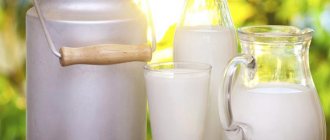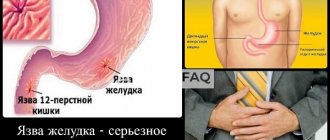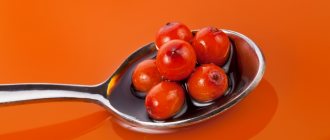Is it possible to fast if you have gastritis?
A clear answer to the question “Is fasting always effective in the development of gastritis?” does not exist. Dynamic indicators when entering fasting do have a positive outcome, but not in all cases.
The protective mechanism against self-corrosion of the mucous membrane by the stomach does not work if there is a high concentration of hydrochloric acid in the produced gastric juice. A number of foods enhance the secretion of hydrochloric acid by the lining cells of the stomach. Certain foods are a source of increased hydrogen ions in the gastric environment. You should not ignore the rule of formation of gastric juice, when an unconditioned reflex is triggered when food enters the oral cavity. The exclusion of the above conditions is designed to reduce the acidity of gastric juice.
Another, contradictory, side of therapeutic fasting is the reduction of the body's vital resources. For this reason, in eliminating pathological phenomena in gastritis, it is customary to use a two-fold rule: under conditions of minimal saturation of the digestive organ with nutrients, the patient receives very small portions of food strictly limited to the list of foods. If the gastric environment is not burdened with high acidity, the “dry fasting” technique is used.
The greatest effect is produced during the period of exacerbation of gastritis, if therapeutic fasting is combined (3-5 days), after which a phase of minimal consumption of the lungs begins to digest substances. In medical practice, it is recommended to use a two-stage cycle no more than three times. This technique will form the basis of the method of therapeutic fasting. To achieve a therapeutic effect, fasting for gastritis is combined with mandatory daily water procedures and cleansing enemas with laxatives while maintaining normal electrolyte concentrations. Toxins of metabolic and bacterial origin leave the human body faster under these conditions.
Gastritis and hunger
Treatment with hunger has existed since such ancient times that it is hardly possible to establish the authorship of this method these days. At different times, official medicine treated this technique unequally. Periods when almost the entire population of the country was systematically malnourished, and many simply died from lack of food, did not contribute to the popularity of hunger as a treatment. But in recent decades, this method has become popular again. Fasting is an integral part of many healthy lifestyle schools.
The fasting treatment method did not work for gastritis either. Moreover, in the acute form of this disease, the body itself suggests this method of treatment. The sick person develops nausea, vomiting, loss of appetite, as if the body were saying in the words of Vladimir Semyonovich: “and I told him, weirdo!, you’re tired - take a rest.”
First of all, you need to figure out whether it really is gastritis. The acute phase of gastritis is characterized by the following symptoms:
- Weakness;
- Nausea, vomiting;
- Abnormal stool;
- Increased gas formation;
- Pain in the epigastrium;
- Bitter-sour taste in the mouth;
- Constant belching with a rotten taste;
- Heaviness in the stomach;
- Heartburn.
If several of the symptoms listed above occur, you should immediately consult a doctor to establish an accurate diagnosis and prescribe treatment. In light of recent discoveries, when it was found that gastritis can be of the nature of a bacterial infection - Helicobacter pylori, it is not enough to simply follow a diet.
It is necessary, along with a general improvement in lifestyle, to take drug treatment for an invasive infection.
The benefits of fasting during gastritis
During acute and chronic pathological processes in the body, the activity of all functional systems is tested for strength, which is positively tested by rare physiological systems and organ apparatuses. A weakened body as a whole needs to mobilize energy. The digestive system reduces the production of gastric and intestinal juice, saliva, bile, etc. Peristaltic movements with the help of intestinal smooth muscle muscles are reduced.
One of the signals given by the body to the psyche is the lack of need to digest food, provided that this process will be difficult for the digestive system at this time. A signal is given to the body in the form of a lack of appetite. You should not resist such signals and aggravate the course of inflammatory and other pathological processes.
When trying to intensively feed the patient, an additional load occurs not only on the digestive, but also on the cardiovascular, urinary, and immune systems. Not eating during acute gastritis restores the body's strength and helps reduce the symptoms of the disease.
Preparing the body for fasting
A complete sudden lack of food consumption for several days does not have a positive effect on the further development of digestive pathology. To this end, hunger should not begin with a complete lack of food, but with a transition to light foods.
During an exacerbation of gastritis, kefir is suitable as a preparatory product for starting fasting treatment. The classification of kefir by acidity and strength is based on the date of its production. Strong kefir is a product produced more than two days ago. Kefir two days old, stored in a refrigerator, is considered medium. Light kefir is a fresh product, the shelf life of which does not exceed a day. Therapeutic fasting begins with the use of light or medium kefir.
Sample menu using kefir:
- First breakfast – 200 ml of drink.
- Second breakfast – 200 ml of drink + 2 biscuits.
- Lunch – 200 ml of drink + cottage cheese casserole without added sugar.
- Afternoon snack – 100 ml of drink.
- Dinner – 200 ml of drink + 1 apple scalded with boiling water.
If there is an irresistible desire to consume food at night, an additional 100 ml of drink is allowed.
With the help of a kefir diet, the body is ready for the main stage of therapeutic fasting for several days, being freed from waste and toxins in the digestive system. Preliminary measures for the main stage of fasting also include frequent exposure to fresh air in the conditions of receiving the necessary ultraviolet light in the morning and evening to strengthen the body's immune forces and sufficient accumulation of calciferol through the skin.
Exit
After completing fasting therapy, the body adjusts to the desired rhythm of work. But in order to maintain the effect of fasting and not spoil the results obtained, you need to adhere to some recommendations for breaking fast.
First, you need to stop drinking soda and juice. The portions consumed should be small; if you feel full, it is better not to finish the remaining two spoons of food.
Food should be introduced into the diet gradually, starting with boiled vegetables and low-fat chicken broths, fermented milk products, etc. in the first weeks after fasting, salted, smoked, spicy, fatty and fried foods should be strictly excluded. Food should enter the body 100 g every 3-4 hours.
Fasting instructions
The first day of fasting can be done in two ways. The first option is dry fasting (the most common method if there are no limiting factors). The second option is to take small portions of mineral water. On the second day, the use of weak tea is not excluded if there are no medical contraindications. When the pain really subsides, on the third day of the fasting cycle it is allowed to consume rice water with the addition of a small amount of wheat flour crackers.
Two Ways to Fast
In order to choose a treatment method, you must first consult with your doctor. Undergo a medical examination and only with the approval and under the supervision of a gastroenterologist and therapist, begin therapeutic fasting.
- Complete refusal of food for a long period of 10-15 days. In this case, it is necessary to drink 2-3 liters of pure or mineral water per day. It is also recommended to replace part of the water with healing herbal infusions. You should not try, without prior experience, to go on a dry fast. People who practice various spiritual directions can afford this method, but an unhealthy person should refrain from such extreme tests of the body.
- A method where short periods, from 2 to 5 days, of fasting are interspersed with periods of taking a light diet. This treatment is carried out in cycles of 2-3 cycles in a row. With this choice of treatment, you can also use dry fasting during one of the periods, under the supervision of a doctor.
Effect on the body
The effect of hunger on the body has an accelerating effect on the course of redox processes. Stagnation and ballast substances that were not eliminated due to the endless supply of new portions of food products leave the body at a speed several times higher than usual. Mobilization of the body's forces to restore lost anatomical structures, including cells of the gastric mucosa during gastritis, occurs faster. The restoration of the performance of important organs of functional systems: the heart and liver is especially quickly affected.
End of the fasting procedure
After the first recovery stage of the gastric mucosa damaged during the gastritis process, it is recommended not to return to the old pattern of food consumption. In the first days after a mineral or kefir diet, the intake of fresh vegetables and fruits, as well as their juices, is prohibited.
It is recommended to cook oatmeal and semolina porridge liquid using milk. Other types of cereals can be boiled to obtain porridge using a water base. It is useful to “heal” the gastric mucosa with cereal decoctions and soups with a rich base for restoring mucus.
The frequency of food consumption during the day should be greater, and the amount of food consumed at one time should be less. After 21.00 it is not recommended to drink even water. The drinking regime should be more abundant than usual, but water with gases for the recovery period is a poor reducing agent.
For complete restoration of the gastric mucosa, the optimal course of treatment consists of three alternating cycles: 3 days of fasting and 3 days of diet.
Changes in health during fasting
With a complete refusal of food, the patient will feel changes:
- There is a strong feeling of hunger, gradually losing intensity.
- There is a slight pain in the abdomen. In case of severe colic, it is necessary to stop fasting.
- On the first day of refusing food, the patient feels lethargic, weak and complains of increased fatigue. After three days, the decline is usually replaced by a surge of vigor and energy.
- An unpleasant taste of acid or bitterness appears in the mouth, dryness of the mucous membrane of the mouth and tongue.
- At first in the morning the patient complains of a slight feeling of nausea.
The exit from the period of food refusal is gradual. On the first day, patients with gastritis are recommended to limit themselves to oatmeal with water and semi-liquid soups.
Who shouldn't fast?
An organism weakened by a lack of food in the form of anorexia or other degenerative processes is not able to withstand stress in the form of hunger. For this reason, such patients with gastritis should adhere to other methods of healing the disease.
The destruction of Helicobacter Pilori by antibacterial therapy cannot be combined with a lack of food intake.
Therapeutic fasting during periods of exacerbation of gastritis in the stomach is not practiced due to the danger of consequences for the fetus in pregnant women.
RepostTweet










